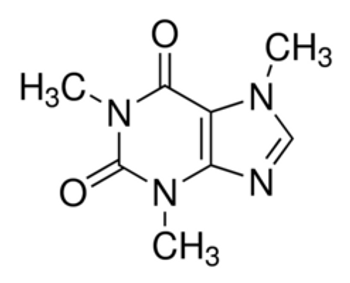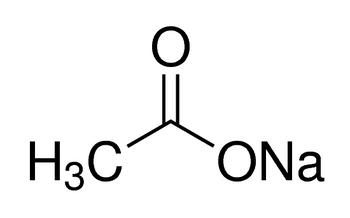Caffeine anhydrous, FCC, FG, 1KG-K
Description
Caffeine anhydrous, 99%, FCC, FG, 1KG-K
Synonym: 1,3,7-Trimethylxanthine
-
CAS Number 58-08-2
-
Empirical Formula (Hill Notation) C8H10N4O2
-
Molecular Weight 194.19
-
FEMA Number 2224
-
Beilstein/REAXYS Number 17705
-
EC Number 200-362-1
-
Council of Europe no. 11741
-
MDL number MFCD00005758
-
PubChem Substance ID 24900939
-
Flavis number 16.016
-
NACRES NA.21
Properties
| Related Categories | A - D, A-D, Alphabetical Listings, C-D, Certified Food Grade Products,
Flavors and Fragrances, Halal Certified Products, Kosher Certified Products
Less... |
| Quality Level | 400 |
| biological source | synthetic |
| grade | FG |
| - | Halal |
| - | Kosher |
| - | anhydrous |
| reg. compliance | EU Regulation 1334/2008 & 178/2002 |
| - | FCC |
| - | FDA 21 CFR 182.1180 |
| assay | 99% |
| form | powder |
| mp | 234-236.5 °C (lit.) |
| solubility | H2O: soluble 18.7 g/L at 16 °C |
| Documentation | see Safety & Documentation for available documents |
| Organoleptic | odorless |
| food allergen | no known allergens |
| SMILES string | CN1C(=O)N(C)c2ncn(C)c2C1=O |
| InChI | 1S/C8H10N4O2/c1-10-4-9-6-5(10)7(13)12(3)8(14)11(6)2/h4H,1-3H3 |
| InChI key | RYYVLZVUVIJVGH-UHFFFAOYSA-N |
| Gene Information | human ... ADORA1(134), ADORA2B(136), ADORA3(140), PDE4B(5142) mouse ... Adora2b(11541) rat ... Adora1(29290), Adora2a(25369) |
General description
Caffeine is an addictive psychoactive compound, consumed mostly in the form of brewed coffee, instant coffee, tea and caffeinated soft drinks.[3] Caffeine is reported to be an allergen and causes anaphylaxis.[6] It is added to common analgesics such as paracetamol, ibuprofen and aspirin for enhancing their analgesic efficacy.[7] It is a plant-derived drug and has been detected in low doses in the floral nectar and pollen of Citrus.[1] Determination of caffeine in beverages by square-wave voltammetry using Nafion-ruthenium oxide pyrochlore chemically modified electrode has been reported.[2] Caffeine acts as an antagonist of adenosine A1 receptors (A1R) and A2AR at non-toxic doses.[4] Chronic consumption of caffeine is reported to prevent the memory impairment in type 2 diabetic mice.[4]
Application
Caffeine (1,3,7-Trimethylxanthine) has been used in a study to determine the benefits of co-ingestion of carbohydrate and caffeine on rugby performance.[8]
Caffeine is the suitable reagent used to investigate effect of its exposure during embryogenesis.[5]
Packaging
1 kg in poly bottle
10, 25 kg in fiber drum
Biochem/physiol Actions
A central nervous system stimulant believed to act through adenosine receptors and monoamine neurotransmitters. It is an adenosine receptor antagonist and adenosine 3′,5′-cyclic monophosphate (cAMP) phosphodiesterase inhibitor. Thus, levels of cAMP increase in cells following treatment with caffeine. It has been reported to affect cellular calcium levels, releasing calcium from intracellular stores. It overrides the cell cycle effects of various chemicals such as protease inhibitors, preventing apoptosis; and it has been shown to inhibit cellular DNA repair mechanisms.





